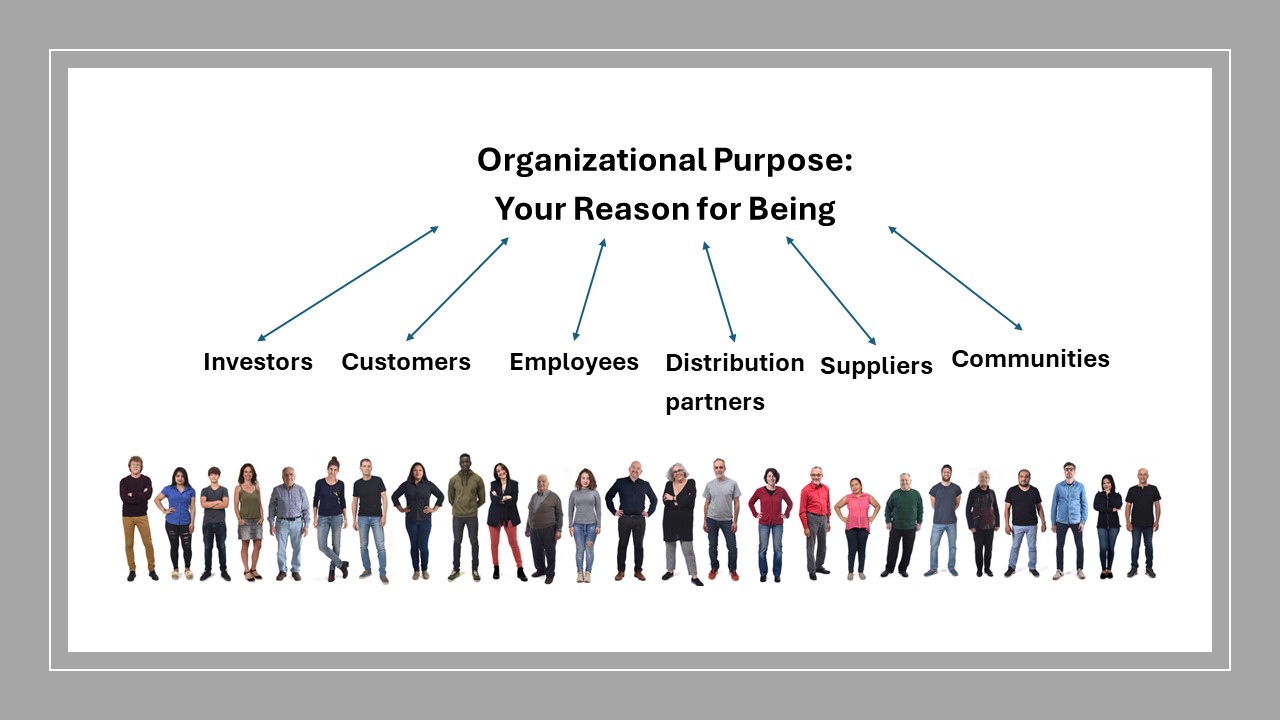Purpose Leadership: A New Paradigm for 21st Century Management?
 For many years, the paradigm for leadership were men like Jack Welch, whose highly disciplined strategic and systematic approach to addressing short-term shareholder interests worked for a while until it didn’t. Has any other leadership model filled the void since then? The authors believe the answer is yes and call it Purpose Leadership.
For many years, the paradigm for leadership were men like Jack Welch, whose highly disciplined strategic and systematic approach to addressing short-term shareholder interests worked for a while until it didn’t. Has any other leadership model filled the void since then? The authors believe the answer is yes and call it Purpose Leadership.By Bruce Bolger and Davin Salvagno
A Focus on Harmonizing Interests Toward a Common Purpose, Goals, Objectives, and Values
Putting Principles Into Action
A Side-by-Side Comparison: Purpose Versus Shareholder Leadership
What is the new paradigm for leadership in the 21st century? What can address the fundamental failure of organizations to engage employees and customers and earn the trust of communities? We believe the model for our times is Purpose Leadership—a focus on enhancing returns for investors only by creating value for all stakeholders—customers, employees, supply chain and distribution partners, and communities.
We believe the basic principles and practices of Purpose Leadership are embodied in this recent Enterprise Engagement Alliance YouTube show with CSX CEO Joe Hinrichs and on other EEA shows with purpose leaders: It does not avoid the need for organizations to make tough trade-offs in a time of crisis or major change, but it provides a guidepost against which these tradeoffs are made and explained.
A Focus on Harmonizing Interests Toward a Common Purpose, Goals, Objectives, and Values
Purpose leadership starts by harmonizing the interests of shareholders and stakeholders toward the achievement of transparent purpose, goals, objectives,
 and values, rather than pitting the interests of one against the other. The premise is simple: organizations that successfully align the interests of their stakeholders toward a common purpose, goals, objectives, and other expectations, financial and otherwise, have a greater chance of sustainable success than those that don’t. While extensive research supports the logical conclusion that having highly engaged customers, employees, supply chain and distribution partners, communities, and shareholders all sharing a common expectation is a sensible practice, no business strategy is a panacea in a world with many threats, challenges, and unknowns.
and values, rather than pitting the interests of one against the other. The premise is simple: organizations that successfully align the interests of their stakeholders toward a common purpose, goals, objectives, and other expectations, financial and otherwise, have a greater chance of sustainable success than those that don’t. While extensive research supports the logical conclusion that having highly engaged customers, employees, supply chain and distribution partners, communities, and shareholders all sharing a common expectation is a sensible practice, no business strategy is a panacea in a world with many threats, challenges, and unknowns.That said, the current model obviously isn’t working. Based on Gallup and the American Customer Satisfaction Index, employee engagement and customer satisfaction, both factors have direct impact on productivity with neither getting better than a general score of C. Gallup estimates the waste due to low employee engagement at $1.7 billion in the US alone. ACSI data suggests a high correlation between customer satisfaction and profitability, and yet no company would consider a 77% customer satisfaction score particularly impressive. Where does this waste appear on balance sheets? To us, it can be found in the same place as the enormous waste caused by poor quality management practices in the US in the 1980s that enabled the Japanese to steal an enormous market share of automobiles and other products from which the US has never recovered: this calamity appeared nowhere on balance sheets but was buried in sales, profitability, and market share declines.
Putting Principles Into Action
It is not enough for CEOs to be human. It takes a system to mobilize multiple stakeholders with different perspectives on the value created by the organization and how they can benefit. There is no need to recreate the wheel, because the world of total quality management in the US and especially in Japan has repeatedly proven that a focus on a clear purpose, goals, and objectives and values that actively involves all stakeholders with transparent metrics and gainsharing have a measurable impact on quality, productivity, and customer satisfaction. Despite emulating the total quality management practices actively shared by the Japanese with US automakers, the Japanese still hold most of the top 10 position in the Consumer Reports list of quality cars in the US, with no domestic automakers even on the nost recent list as of this reporting.
Below are the characteristics of Purpose Leaders based on a similar approach in total quality management that puts a premium on the value of people—an element the Japanese continue to focus on and about which the US automotive companies continue to struggle based on the lengthy, costly strike.
A Side By Side Comparison: Purpose Versus Shareholder Leadership
While the framework for Purpose Leadership is taught at a few universities, such as the Darden Business School at the University of Virgina (See ESM: Seeking an MBA in Stakeholder Capitalism? most people have never heard of the concept of stakeholder capitalism or even of related frameworks such as Conscious Capitalism, Economics of Mutuality, B-Corp, or the Shared Value Initiative. So, the many CEOs and other leaders who embrace these principles do so based on both principles and instincts. Here is an outline of the general difference between Purpose Leadership and Shareholder Leadership based on how they address key organizational principles and stakeholders, recognizing organizations might fall somewhere in between in many areas either intentionally or through lack of knowledge.
To gauge your organization's progress toward Purpose Leadership, take this free, confidential 10-minute self-assessement from the Maturity Institute and the Enterpise Engagement Alliance.
Principles/ Stakeholders |
Purpose Leadership |
Shareholder Leadership |
Purpose |
|
|
Values |
|
|
Financial Goals |
|
|
Business Operating Systems |
|
|
Shareholders |
|
|
Employees |
|
|
Customers |
|
|
Distribution Partners |
|
|
Supply Chains |
|
|
Communities |
|
|
Environment |
|
|
Transparency |
|
|


















